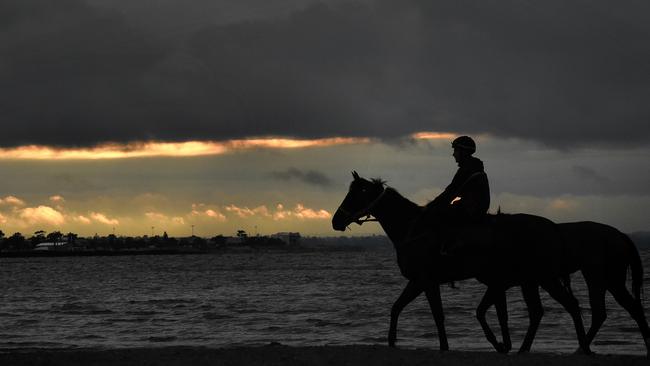La Niña defined: What is La Niña and how will it affect Australia?
OUR Aussie Christmas might be cold and wet, thanks to a weather phenomenon threatening to evolve. So how will a La Niña event affect Australia?
VIC News
Don't miss out on the headlines from VIC News. Followed categories will be added to My News.
THE risk of a cool, wet Australian summer has doubled, and climate scientists are keeping a close eye on the threat of La Niña taking over the holiday season.
La Niña is a wet weather phenomenon triggered when the interplay of the ocean and the atmosphere meets particular conditions.
RADAR GLITCH CREATES CYCLONE EYE OF THE STORM NEAR LAVERTON
THE PROOF AUSTRALIA IS GETTING HOTTER
Stemming from the tropics, La Niña events in Australia are known to cause more rainfall, cooler maximum temperatures and higher numbers of tropical cyclones from December to February.
Australia has endured 18 La Niña events since 1900, and of these, 12 have resulted in flooding.

WHAT CAUSES LA NIÑA?
Wind blowing near the Tropical Pacific pushes warm water that floats on the top layer of the ocean towards the east coast of Australia and Indonesia, drawing cold water up from below.
With warmer waters surrounding parts of Australia, air can rise more easily and form clouds.
In fact, in the warm months from December to March, the average rainfall for eastern Australia is 20 per cent higher during years when La Niña evolved.
IS IT NORMAL?
While rare, La Niña is part of Earth’s natural climate cycle, and has been for millions of years.
Scientists have seen evidence of La Niña in ancient air bubbles found in ice that’s thousands of years old, in sediment pulled up from deep below the ocean floor, in coral fossils, and in tree rings.

WHAT’S THE DIFFERENCE BETWEEN EL NINO AND LA NIÑA?
El Nino is the stark opposite to La Niña and occurs when winds around the tropical Pacific weaken.
This means some of the warm water flows back towards South America, taking rainfall with it.
As a result, Australia will have a dry year when El Nino occurs.
WHAT DO EL NINO AND LA NINA MEAN?
It wasn’t until the 19th century that El Niña was first recognised by humans.
A Peruvian fisherman noticed warm water would sometimes infiltrate the South American coast around Christmas.
The phenomenon was named El Nino, which means “boy child” after Jesus. The opposite effect, La Niña, means “girl child”.


